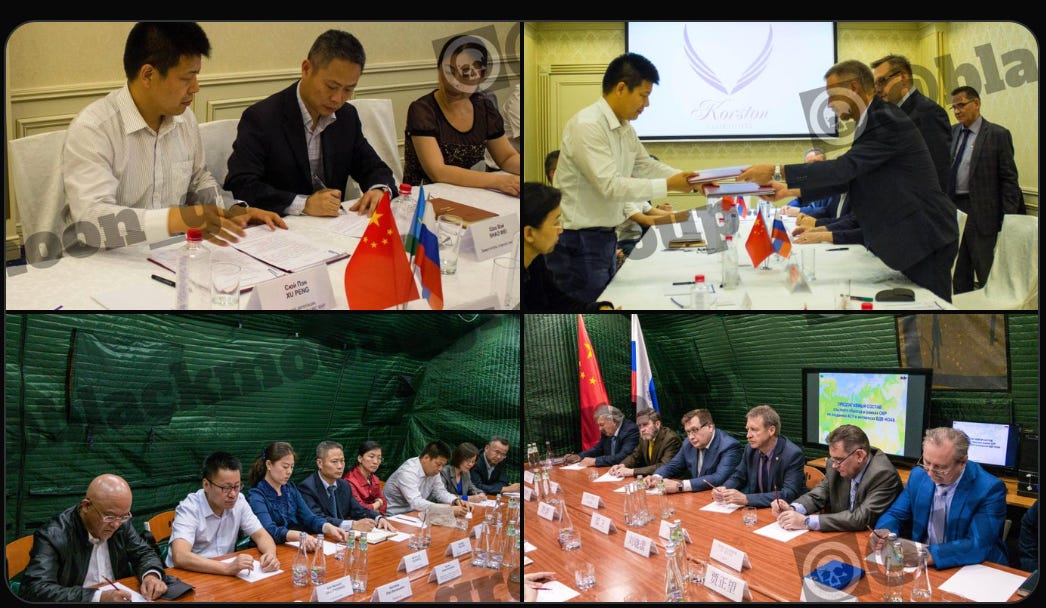Leaked Files Show Russia Agreed to Train Chinese Paratroops for Taiwan Invasion, Analysts Say
WASHINGTON — Russia and China have secretly agreed for Moscow to provide equipment and special forces training that would allow the PLA to air-drop armored vehicles and paratroopers, significantly boosting Beijing’s capacity to invade Taiwan, according to an analysis of leaked Russian documents by a leading British defense and security institute.
The Royal United Services Institute (RUSI) said much of a trove of Russian documents released this summer by a shadowy hacktivist collective known as Black Moon appears authentic. The papers describe concrete Russian offers to equip and train Chinese airborne forces — including vehicles, parachute systems, command modules, and instruction by Russian specialists.
RUSI’s findings landed like a bombshell, suggesting that the military-industrial communities of Russia and China are more closely integrated than previously acknowledged. The implications stretch from Russia’s war in Ukraine to growing fears that China intends to invade Taiwan by 2027.
The key point, analysts say, is that while China has built significant amphibious landing capacity, Taiwan’s geography offers relatively few beaches suitable for large-scale landings. U.S. military experts argue this natural constraint remains Taiwan’s greatest defensive advantage. Beijing, however, lacks experience in paratroop and large-scale airdrop operations — precisely the area where Russia has decades of history. The Black Moon files indicate Moscow has agreed to fill this gap, giving Beijing a new invasion option. Still, RUSI notes a caveat: while “significant portions” of the roughly 800 pages reviewed align with known procurement patterns, some parts may have been altered or taken out of context, and no government has confirmed the arrangements.
Taken at face value, the documents and RUSI’s verification point to a package of measures allowing the PLA to expand beyond traditional beach landings. According to the leaks, Russia in 2023 offered to sell China a full airborne battalion’s worth of equipment: dozens of light amphibious assault vehicles, a small number of lightweight anti-tank guns, airborne armored personnel carriers, command vehicles, specialized parachute kits, and integrated communications systems. The contracts also detail training in both Russia and China, and the embedding of Russian instructors to oversee collective exercises and teach airborne tactics.
One of the most alarming sections of RUSI’s report spells out in technical jargon what Russia agreed to provide — and how it could endanger states beyond Taiwan.
“The agreements provide for the transfer of special-purpose parachute systems ‘Dalnolyot,’ which are designed for inserting loads of up to 190 kg from an altitude of up to 32,000 feet, achieving a range of between 30–80 km depending on load. Russia is equipping and training Chinese special forces groups to penetrate the territory of other countries without being noticed, offering offensive options against Taiwan, the Philippines and other island states in the region.”
The documents reference minutes of a meeting held March 8, 2024, in Moscow, where Russia agreed to supply China by the end of 2024 with data on how the Dalnolyot system performed in extreme cold down to –60 degrees Celsius. Building on RUSI’s reporting, Defense News quoted analysts saying Moscow’s aim is to position itself as a military supplier to Beijing while raising funds for its war in Ukraine.
The Black Moon files include both completed and draft documents referencing delegations traveling to Moscow, delivery and payment timelines for parachute systems and amphibious vehicles, and minutes of technical meetings. They also contain contracts and commitments purportedly drawn up by Russian and Chinese corporations.
One leaked photo appears to show purported senior Chinese defense-linked officials seated across from Russian counterparts in what seems to be a Moscow conference room. Visible name plates and presentation slides suggest a formal setting, reinforcing the impression of structured, face-to-face collaboration in a high-security environment.
Keep reading with a 7-day free trial
Subscribe to The Bureau to keep reading this post and get 7 days of free access to the full post archives.



